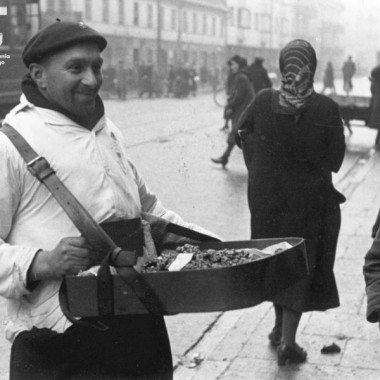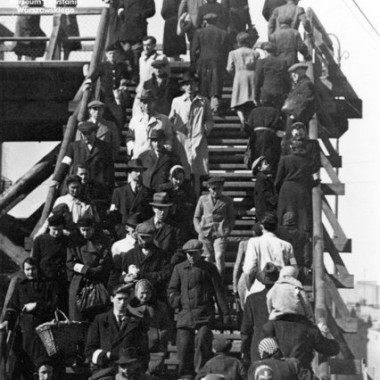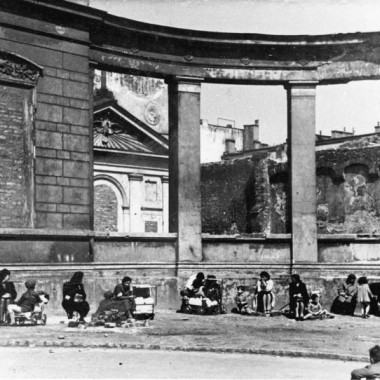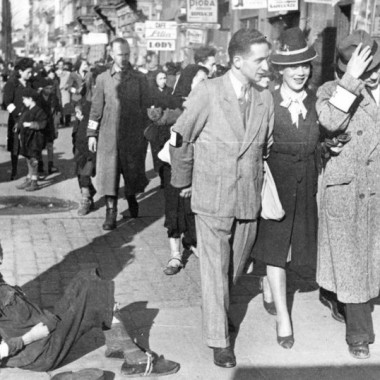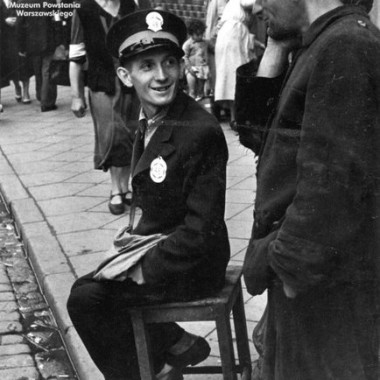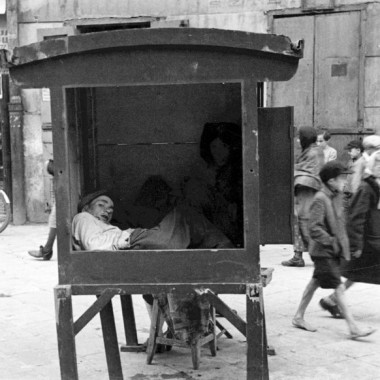Little is known about the life of Mieczysław Bil-Bilażewski. The surviving portraits show a young handsome man with carefully groomed hair. He was a cameraman, an actor, a director, but most importantly a photographer. He came from Poznań, where he had started work as a press photo reporter. He moved to Warsaw in the early 1930s and opened his photo studio known as M. Bill, where he took photos of popular actors and theatre plays. It was then that his film adventure started. As early as 1930, he took part in the shooting of aerial takes for the film Gwiaździsta eskadra. Later on he took stills and played bit parts in popular films, including Każdemu wolno kochać, Córka generała Pankratowa and Manewry miłosne. In 1938–1939, as the director and operator, he produced a series of short propaganda documentaries about Gdańsk, Gdynia and Lviv, including Lwów wczoraj i dziś, Szlakiem mew, Nasz port Gdynia, and Polska w Gdańsku. Mieczysław Bil-Bilażewski was a talented imitator – he performed in numerous radio plays where he imitated the sounds of animals, nature and others. He also took part in the radio show Podwieczorki przy mikrofonie aired by the Warsaw Radio Station of the Polish Radio. During the occupation, he continued to run his photo studio. He took photographs of plays staged by the German Theatre of the City of Warsaw and official Polish theatres controlled by the German authorities. He also prepared photographic footage of various Germans celebrations as well as propaganda photos. Bilażewski stayed with his family in Vienna for some time, but returned to Warsaw after the war. He died on 2 April 1965 at a hospital in Cibórz near Poznań.
Mieczysław Bil-Bilażewski's photographs include documentation of some German celebrations and a photo report from the Warsaw Ghetto. A group of images of occupied Warsaw was found among the memorabilia of Stanisław Bagiński, a photographer and newsreel operator during the Warsaw Rising. Larger, carefully prepared prints were backed with a stuck-in grey paper. With the paper removed, the reverse side of the photos showed the stamp "Mieczysław Bil-Bilażewski", and some had the signature "Bil" made with a soft blue pencil. Most probably, Mieczysław Bil-Bilażewski took his photos in the Warsaw Ghetto under a permit from the German authorities. Similar photo reports were made also by German photographers Ludwig Knobloch and Albert Cusian, whose works are stored in the German Federal Archives in Coblenz. The topic of those works could not be accidental. The crowded streets of the Ghetto, people lying on the pavements near café signboards, a flea market and piles of bodies in mass graves. Those photographs were not meant to inspire the feeling of sympathy. Just the opposite, in line with the Nazi ideology, images of the extreme poverty in the Ghetto were meant to arouse aversion to the Jews. The Nazi propaganda's favourite theme showing the contrast between e.g. smart-looking young men walking past a beggar lying on the pavement was to illustrate the alleged lack of the sense of community. Today, Bil-Bilażewski's photo footage from the Ghetto is a terrifying document of the events and a proof of the planned extermination.





